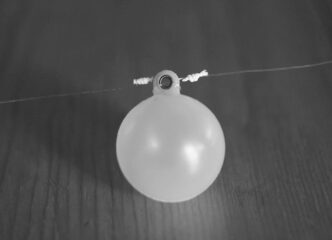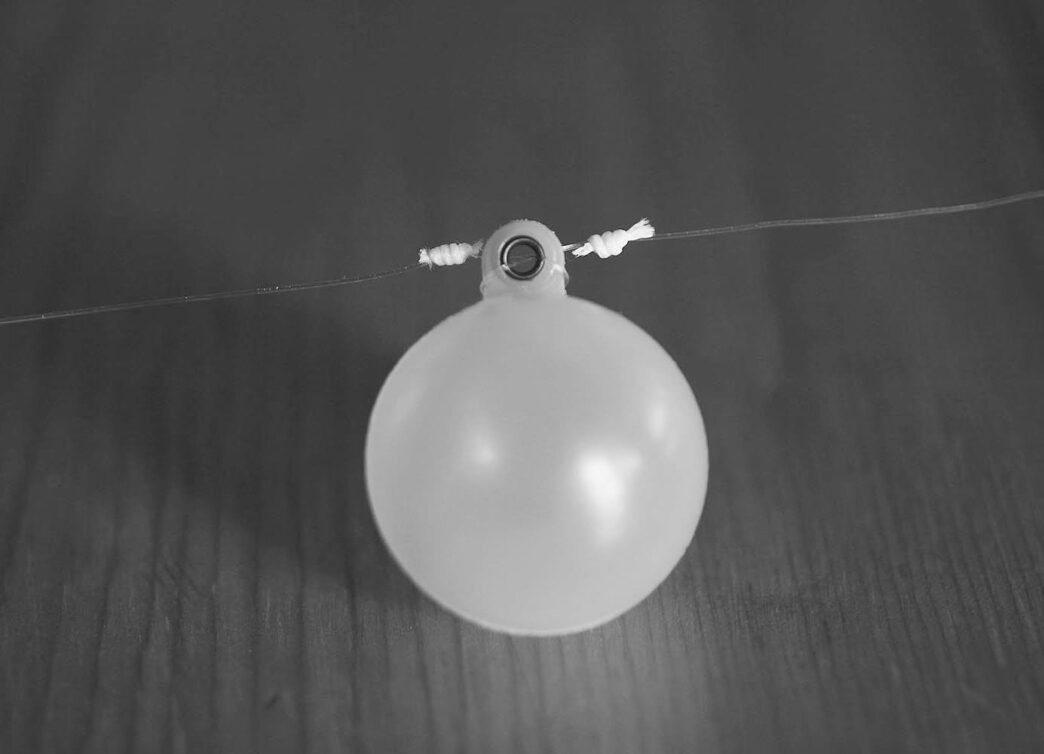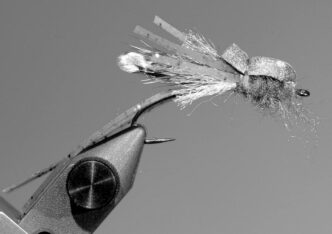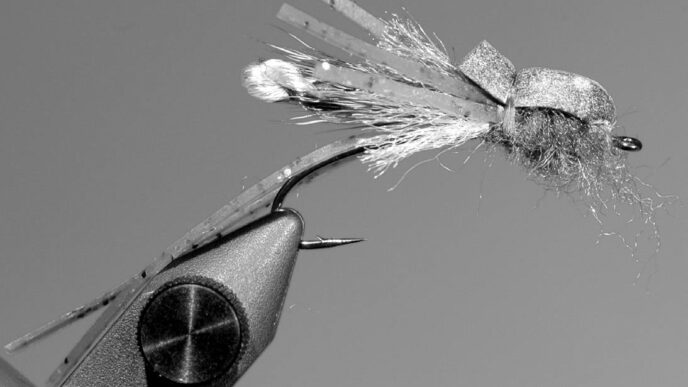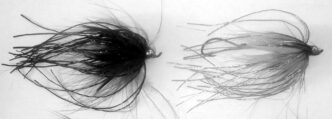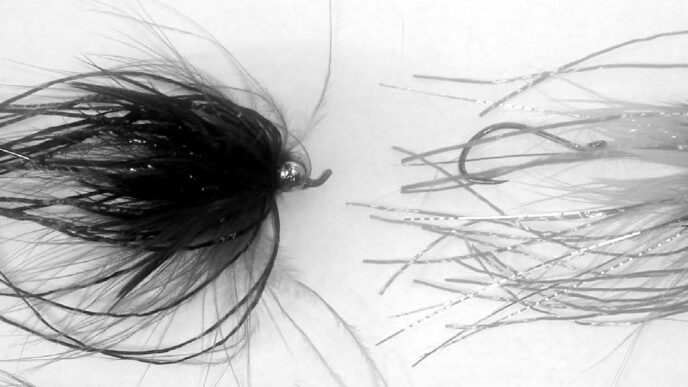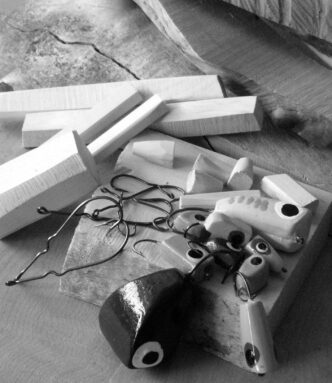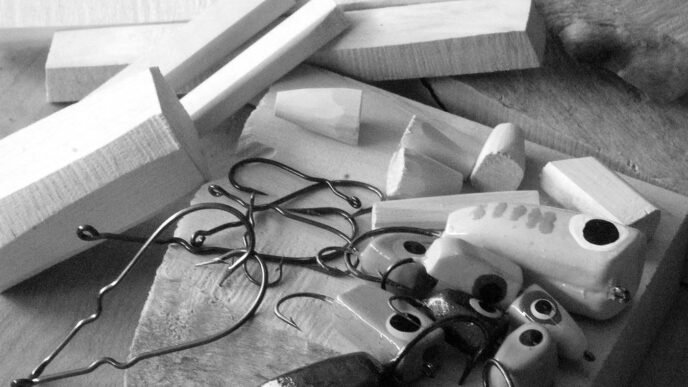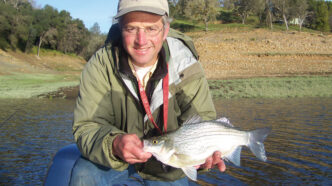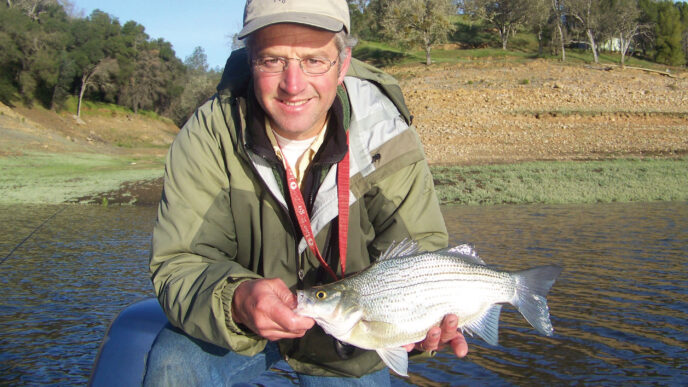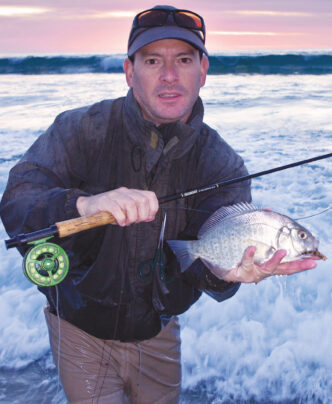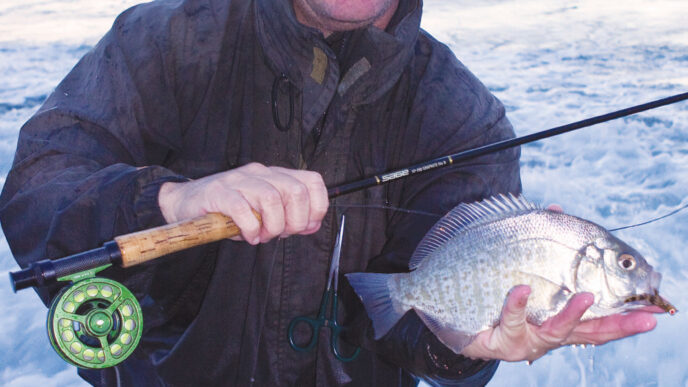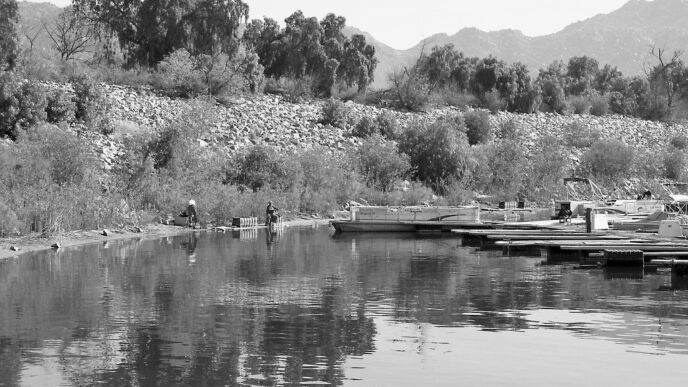Unless you’re a polygamist Mormon, there isn’t much fun in fundamentalism. Extreme fly-fishing fundamentalism peaked in the early 1900s, when the sport was defined as casting “far and fine” upstream with a dry fly to a visibly rising trout. Of course, there was “wet” fly fishing, but under the stern order of Frederic Halford and his flock, it was as distant from “real” fly fishing as was the practice of threading live maggots onto hooks in the pursuit of carp.
In 1910, the heretic George (G. E. M.) Skues wrote a book advocating the practice of fishing with a nymph. He dared to call this form of angling “fly fishing.” Four years later, an American, George La Branche, advocated blindly drifting a fly downstream into good-looking holding water (invariably the pillow in front of a rock) in hopes of inducing an invisible trout to rise from the depths to eat the offering. His book, The Dry Fly in Fast Water, was viewed as blasphemy, but by then, fly fishing in its fundamentalist form was drifting, with lots of drag, down the gutter, and it has been circling the drain ever since.
Just as there are small pockets of bomb-tossing Muslim extremists in this world, there exist cells of extreme fly-fishing-fundamentalists, peering and leering through the alders at their wayward brethren who sinfully ply the water with lead, bobbers, sink-tips, and nymphs.
Fundamentalists in any form give me the heebie jeebies, and when, about a decade ago, I was asked to help craft a flyfishing certification program, I ran for the hills. I can see value in having fly-casting instructor benchmarks, but creating a set of rules about how to fly fish “properly” is an entirely different ballgame.
The impetus for the certification plot was the plethora of fly-fishing guides on the Trinity and lower Sacramento who use indicators, beads, multiple flies, and lots of lead. Several well-connected old-schoolers were offended by the idea that these guys were pawning themselves off as fly-fishing guides when, in their opinion, they weren’t actually fly fishing at all.
I recently received a fly shop catalog that offers 13 different kinds of strike indicators, including Frog Hair indicators complete with bobber stops, and, of course, Thingamabobbers, which don’t even pretend to be anything but bobbers. This year, “indicator” rods are the hot new item. I doubt the fly-fishing certification program will be raising its head anytime soon. The equipment manufacturers are betting against it.
I’ve never been a fly-fishing purest and have used spinning rods to cast a bubble with a fly and deployed Rapalas off the end of a $600 fly rod. It’s all fun. I enjoy drowning worms, tossing plastics, and trotlining as much as the next guy — it’s simply that I enjoy fly fishing a whole heck of a lot more. To be honest, I do in fact most enjoy casting dries “far and fine” to rising trout, but am certainly not going to hold anyone else to my level of affliction. To prove my point, I’ll offer a few heretical fly-fishing tips that I use when fish aren’t obliging, despite the fact that I’ve tried angling for them from the higher moral ground.
The difference between a good nymph fisher and a great nymph fisher is a piece of split shot. Get it down fast, get it down deep, and get in the habit of having enough weight that you can actually feel the riverbed as the shot ticks from boulder to boulder. The weight should be the deepest part of your rig and probably not in your fly. Weight snags, and weight with a hook in it is nothing more than a sacrifice fly. You must be willing to lose your weight, or you won’t fish the gnarly places where the big dogs wait.
The safest way to pitch your fly into the strike zone without losing it is to tie several inches of monofilament a few pounds weaker than the tippet to the hook bend or eye, crimp a couple shot on the mono, then throw an overhand knot on the end. The light mono will hang beneath the fly, the knot will keep the shot from sliding off the end, and when the shot gets snagged, you can pull out knowing that you’ll snap the monofilament fuse and save the fly. You can also set the monofilament tag through the split in the shot, then wrap it over the shot and back through the split before crimping. Snagged soft-putty weight will also strip off the leader and save your fly, but it can get expensive pretty quickly.
Indicators can be lumped into two categories. One kind of indicator helps you keep an eye on where the fly is located and the other kind of indicator is a bobber that keeps the fly suspended at a certain depth. For fly-locating indicators, it’s hard to beat Orvis Strike Putty, which is the best of the putties now available because it sticks like bubble gum, barely affects the drift, and is easily removable and reusable. Another nice indicator is simply a pea-sized lump of fat yarn (a very soft yarn used by steelhead and salmon anglers), attached to the leader by tying an Overhand Knot in the leader and cinching it down on the yarn. An Overhand Knot (called a “wind knot” and other names when you don’t want one) will not weaken the system if it is cushioned by a piece of yarn. There are dozens of bobber-style indicators out there, and almost all share the irritating tendency to slide down the leader. Try looping the leader through the indicator twice, or shove a small rubber band into the hole in the indicator to shim the indicator in place. Stretch the band to minimize its diameter when pulling it through the hole, and when you let go, it will expand and set into place. You can also pass a folded leader through the indicator’s hole, insert the rubber band in the loop, and pull it back down into the hole.
A time-proven way to secure a bobber is with old-fashioned bobber stops. You can buy bobber stops at any bait shop, but making your own is cheap and simple. Use a piece of cotton string and tie it to the mono with a Uni-Knot. Snug it down and trim the ends. When it gets wet, it will swell, grip the line, and make a bump over which the indicator won’t slide easily. Do this above and below the bobber. When you get tired of using an indicator, simply unloop it, slide the string knots up to the fly line, and forget about them. You can wind them through the guides and onto the reel for repeated outings.
The most sensitive indicators are tied directly to the leader (leader taper doesn’t matter, because the weight of the indicator carries it out over the water). Tie the tippet directly to the indicator so that it hangs straight down into the water column. The slightest movement of the tippet will usually be translated by a slight slowing or tilting of the indicator. Do not wait for the indicator to bob up and down. A bobbing indicator tells you that a fish is hooked — a slightly dragging indicator tells you that a fish is tasting the nymph. Set!
The worst hook set is made by raising the rod straight into the air. Instead, sweep the rod sideways with the tip held close to the river’s surface. The water’s tension against the line and leader will instantly set the hook, eliminating the delay caused when a raised rod is forced to take slack from the system.
Forget everything you ever learned in fly-casting class when tossing indicator rigs. Water haul the indicator, weights, and flies to a spot upstream of you. As soon as the mess hits the water, a wide sweeping roll cast should lay out everything relatively cleanly back into the fishing zone. It may not be “proper” fly fishing, but it is functional and rather fun.
The first time I was jolted from the confines of proper fly-fishing technique was an evening on the Truckee with Joe Humphreys. This guy knows how to fish, and because he comes from the limestone creeks of Pennsylvania, I took it for granted that he would approach the water like a proper gentleman, with a Wheatley fly box brimming with quills, variants, and other dainty Catskill patterns.
It was long after dark, and he wanted one of those big browns for which the Truckee is so famous. When we arrived at “the spot,” he pulled out a classic Hardy reel spooled to the rim with monofilament. Joe tied on a massive, lead-filled bugger and explained that the weight of the streamer would pull out the monofilament and that fly line would only impair the sink rate, the fight from the fish, and his tactile sense of what the fly was doing. The casts were less than 20 feet, and no fly line in the world would reasonably load his rod and punch out that fly. It was a case where common sense and logic trumped ideology, and he didn’t for a moment apologize. Nor did he need to.



